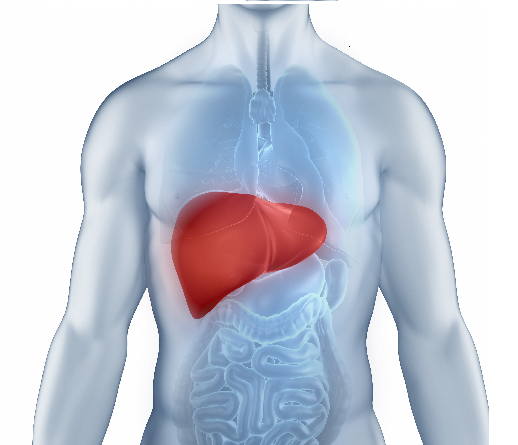Tuberculosis: Symptoms, Diagnosis and Prevention

Tuberculosis, also known as TB, is a significant health concern that affects lakhs of Indians every year. India accounts for a staggering 28% of all TB cases worldwide, as stated in the Global TB Report (2022).
Even though the number of TB cases in India has decreased since 2021, the goal of eliminating tuberculosis is yet to be achieved. And since TB is a highly contagious bacterial disease, prevention is indeed better than cure.
The first step to protecting yourself and your communities from tuberculosis is awareness. In this article, we will detail everything you need to know about the types of TB, its symptoms, and methods of prevention and treatment.
Is Tuberculosis Viral or Bacterial?
The causative agent of tuberculosis is a bacteria called Mycobacterium tuberculosis. TB is an airborne infectious disease that spreads from person to person through the air.
When an infected individual with active TB disease coughs or sneezes, they release respiratory droplets containing the bacteria into the air. Others nearby can inhale these droplets, leading to a TB infection.
Once the TB-causing bacteria enter your body, they can settle in the lungs and multiply. From there, the bacteria can spread to the lymph nodes, bones, joints, abdomen, genitourinary system, central nervous system, and skin.
What Are The Types of Tuberculosis?
Here are the four most common types of tuberculosis.
1. Pulmonary Tuberculosis
As the name suggests, pulmonary TB primarily affects the lungs. The symptoms of pulmonary TB are persistent cough, chest pain, coughing up blood or sputum, fatigue, weight loss, and night sweats.
2. Extrapulmonary Tuberculosis
Extrapulmonary TB occurs outside the lungs and affects various organs and tissues of the body, such as the lymph nodes, bones, joints, abdomen, genitourinary system, central nervous system, and skin. This type of tuberculosis may occur alone or in combination with pulmonary TB.
Unlike pulmonary TB, which affects the respiratory system, the symptoms of extrapulmonary TB depend on the specific organ or site affected.
3. Drug-Resistant TB
Drug-resistant TB occurs when the TB bacteria develop resistance against one or more of the first-line anti-TB drugs. There are two main categories of drug-resistant TB:
| Multidrug-Resistant Tuberculosis (MDR-TB) | It is caused by strains of TB-causing bacteria that have become resistant to first-line drugs: rifampicin and isoniazid.
|
| Extensively Drug-Resistant Tuberculosis (XDR-TB) | It is a more severe form of drug-resistant TB. It is caused by strains resistant to:
|
4. Latent Tuberculosis Infection (LTBI)
LTBI occurs when a person is infected with TB-causing bacteria but has no “active” disease. This means that people with LTBI do not experience symptoms and cannot infect others. The bacteria remain dormant and can become active in the future if the immune system is weakened.
Who is At Risk of Getting Infected?
TB is not as quickly transmitted as the common cold. It requires prolonged and close contact with an infectious individual for transmission to occur.
In addition, not everyone who becomes infected with TB bacteria will develop active TB disease. Your immune system often controls the infection, leading to latent tuberculosis (LTBI). People with LTBI do not have symptoms and are not contagious, but they are at risk of developing active TB disease in the future if their immune system becomes weakened.
The following factors can increase the risk of developing active TB disease once infected:
- A weakened immune system
- Malnutrition
- Diabetes
- Smoking and tobacco use
- Certain medical conditions (such as cancer or kidney disease)
- Certain medications (such as immunosuppressive drugs)
Prompt diagnosis and treatment of active TB disease, along with preventive treatment for those with LTBI, are crucial in controlling the spread of the disease and preventing its complications.
Prevention of TB in India
The number of TB cases in India has declined since 2021. By 2025, India aims to eliminate tuberculosis with proactive measures such as early detection, prevention, and treatment. Vaccination programs and new drugs are in the pipeline, and the government is actively tracking the number of TB cases in the country.
Preventing tuberculosis (TB) involves a combination of strategies to reduce the transmission of the bacteria, identify and treat infected individuals, and protect individuals at high risk of developing active tuberculosis.
- Encouraging vaccination: The Bacillus Calmette-Guérin (BCG) vaccine has been proven to protect against TB in children.
- Proactive healthcare measures: Well-ventilated spaces helps reduce the concentration of infectious particles in the air. Reducing poverty, improving living conditions, and addressing social determinants of health can help prevent TB by reducing the risk associated with transmission and progression.
- Prompt identification and isolation: Prompt identification, isolation, and treatment of individuals with active TB disease are essential to prevent transmission to others.
The Importance of Early Diagnosis and Treatment
Early diagnosis and treatment of tuberculosis (TB) are the key to controlling infection and improving patient outcomes. Timely identification of TB cases enables prompt initiation of appropriate treatment, which benefits the infected individuals and helps prevent TB transmission to others in the community.
Today, diagnostic tests for TB, like sputum microscopy, culture, and molecular tests, are more reliable and accessible. Early diagnosis can help India take one step closer to reducing the burden of TB in improving patient outcomes and moving towards a TB-free future.












